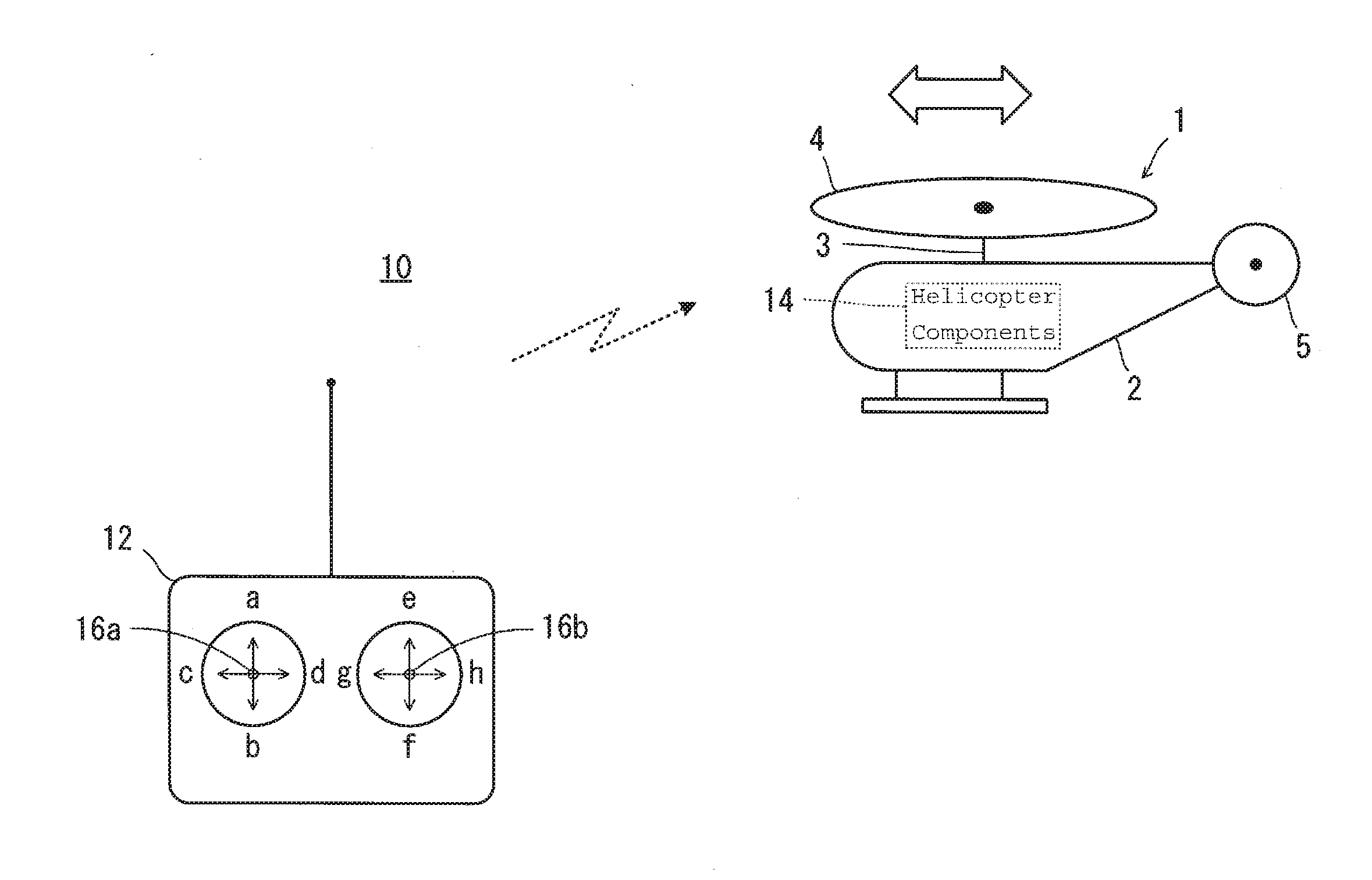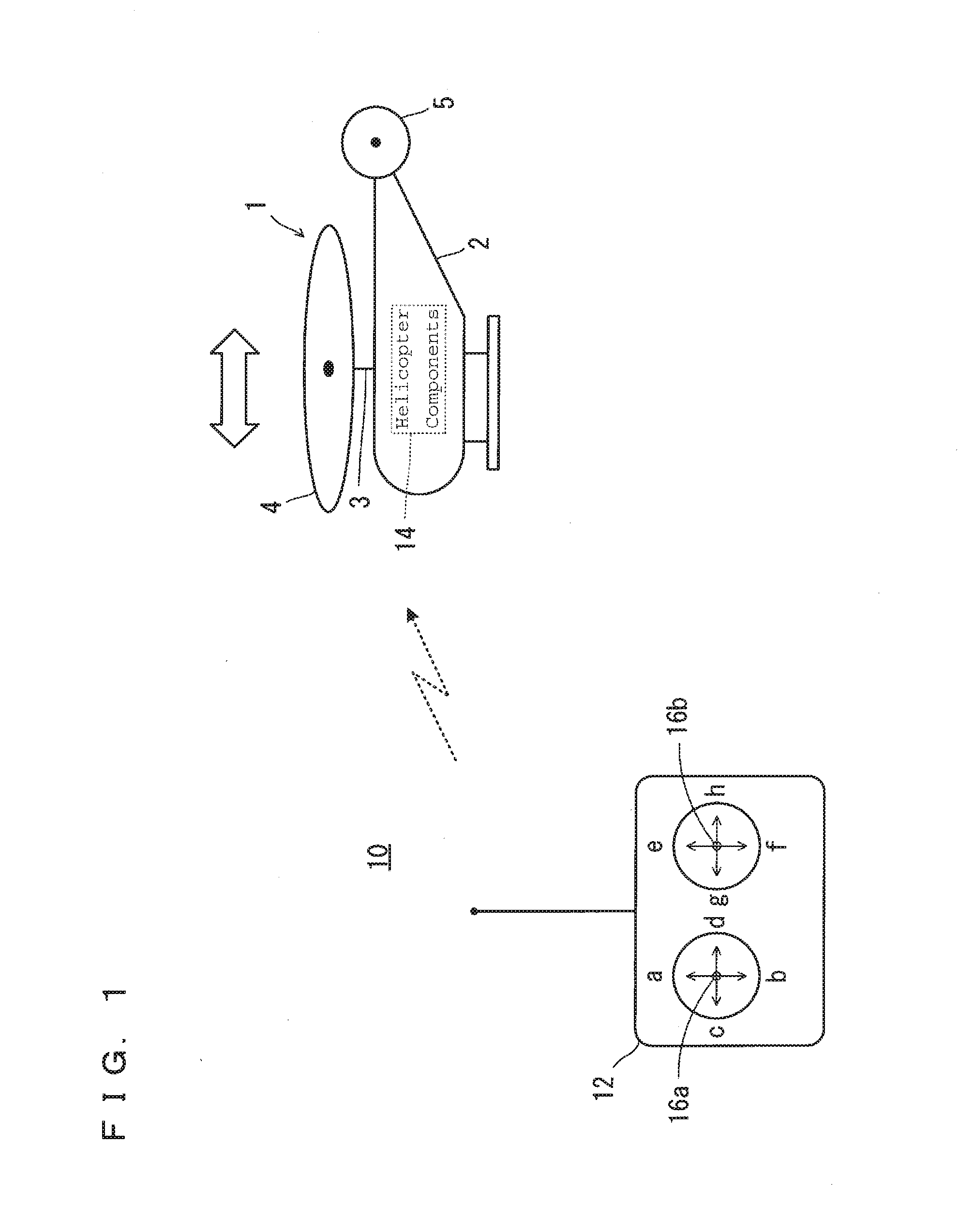Remote control device
a remote control and control device technology, applied in the direction of process and machine control, toy aircraft, instruments, etc., can solve the problems of increasing the difficulty of maintaining a stable and constant flying speed of the helicopter, requiring a high level of skill, and the above-described operation assisting device is difficult for an operator to operate, so as to prevent unintentional speed changes, easily control a forward moving speed, and change the speed of transportation equipment.
- Summary
- Abstract
- Description
- Claims
- Application Information
AI Technical Summary
Benefits of technology
Problems solved by technology
Method used
Image
Examples
Embodiment Construction
[0023]Hereinafter, preferred embodiments of the present invention will be described with reference to the drawings.
[0024]In a preferred embodiment of the present invention shown in FIG. 1, a transportation equipment preferably is, for example, an unmanned helicopter 1 (hereinafter, simplified as helicopter 1). Therefore, a remote control device 10 according to the preferred embodiment shown in FIG. 1 is a remote control device for the helicopter 1.
[0025]The helicopter 1 includes a body 2, a mast 3, a main rotor 4, and a tail rotor 5. The mast 3 protrudes upward from the body 2 and is rotatable. The mast 3 includes an upper end portion where the main rotor 4 is fixed. The tail rotor 5 is rotatable and is located at a rear end portion of the body 2. The main rotor 4 and the tail rotor 5 are rotated based on a driving force from an unillustrated drive source.
[0026]The remote control device 10 includes a transmitter 12 which transmits signals toward the helicopter 1, and helicopter comp...
PUM
 Login to View More
Login to View More Abstract
Description
Claims
Application Information
 Login to View More
Login to View More - R&D
- Intellectual Property
- Life Sciences
- Materials
- Tech Scout
- Unparalleled Data Quality
- Higher Quality Content
- 60% Fewer Hallucinations
Browse by: Latest US Patents, China's latest patents, Technical Efficacy Thesaurus, Application Domain, Technology Topic, Popular Technical Reports.
© 2025 PatSnap. All rights reserved.Legal|Privacy policy|Modern Slavery Act Transparency Statement|Sitemap|About US| Contact US: help@patsnap.com



